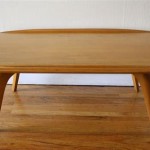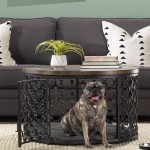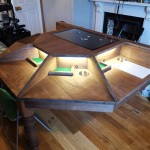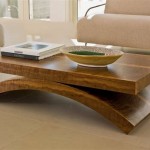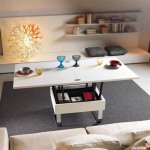How to Cover a Glass Dining Table
Glass dining tables offer a sleek, modern aesthetic, but their hard, transparent surface can be prone to scratches, chips, and temperature damage. Proper covering techniques safeguard the glass while adding style and functionality to the dining area. Several covering options cater to different needs and preferences.
Tablecloths: Tablecloths provide comprehensive surface protection and come in various materials, including linen, cotton, polyester, and vinyl. Linen and cotton offer a natural, elegant look but require more care and may wrinkle easily. Polyester is more durable, wrinkle-resistant, and often more affordable. Vinyl offers excellent spill protection and is easy to clean, making it a practical option for families with children.
When selecting a tablecloth, consider the table's dimensions. Measure the tabletop's length and width, then add twice the desired drop length to each measurement. This ensures the tablecloth drapes properly over the edges. For example, a 48-inch round table with a desired 15-inch drop requires a tablecloth with a 78-inch diameter.
Table Pads: Table pads offer a layer of cushioning and protection against heat and scratches. They sit directly on the glass surface beneath the tablecloth, providing a softer, more comfortable dining experience while preventing the glass from becoming cold to the touch. Table pads are typically constructed from heat-resistant materials like felt, foam, or vinyl.
Felt table pads offer a thinner, more discreet layer of protection, while thicker foam or vinyl pads provide greater cushioning. Measure the tabletop precisely to ensure a proper fit. Custom-cut pads are often available for non-standard table sizes.
Placemats: Placemats offer individual protection for specific areas of the table, primarily where plates and cutlery are placed. While they don't cover the entire tabletop, they provide a barrier against scratches, spills, and heat. Placemats come in various materials, such as cork, bamboo, silicone, and fabric. Choosing a material depends on the desired aesthetic and level of protection needed.
Cork and bamboo offer a natural, eco-friendly option with good heat resistance. Silicone placemats are durable, easy to clean, and often come in vibrant colors. Fabric placemats can add a decorative touch but may require more frequent washing.
Table Runners: Table runners are a decorative covering option placed lengthwise down the center of the table. They provide a focal point for the table setting and offer some protection against spills and scratches in the central area. Table runners come in diverse materials, including fabric, lace, and burlap, allowing for various decorative styles.
When choosing a table runner, consider the table's dimensions and the desired look. The runner should be shorter than the table length to allow the table's edges to show. A common guideline is to leave approximately six to twelve inches of space between the ends of the runner and the edges of the table.
Combining Covering Options: Layering different covering options can offer both protection and aesthetic appeal. A common practice involves using a table pad for underlying protection, followed by a tablecloth for overall coverage and style, and finally, placemats for individual settings. This layered approach provides comprehensive protection while allowing for decorative flexibility.
Maintenance and Cleaning: Proper maintenance of table coverings prolongs their lifespan and preserves the table's surface. Regularly clean tablecloths and placemats according to the manufacturer's instructions. Some materials require machine washing, while others may need hand washing or spot cleaning. Table pads can be wiped down with a damp cloth as needed.
Rotating table pads and tablecloths periodically can help distribute wear evenly and prevent excessive wear in specific areas. Avoid placing hot dishes directly on tablecloths or table runners, even with a table pad underneath. Using trivets or hot pads provides an extra layer of protection against heat damage.
Choosing the Right Covering: Selecting the appropriate covering depends on the specific needs and desired aesthetic. Consider the frequency of table usage, the presence of children or pets, and the overall style of the dining area. Opting for durable, easy-to-clean materials is practical for frequent use and families with young children. For more formal settings, elegant fabrics like linen or damask can enhance the dining experience.
By carefully considering the various covering options, individuals can protect their glass dining tables from damage while enhancing their dining space's functionality and aesthetic appeal. Regular maintenance and proper cleaning ensure the longevity of the coverings and preserve the table's pristine condition.

30 Ways To Incorporate A Glass Dining Table Into Your Interior Digsdigs

Glass Table Tops A Complete Guide

Glass Table Cover Coffee Dining Desk Side Protection
Dining Table Decor Ideas Abc Glass Mirror

How To Protect Your Glass Tabletops

Glass Table Tops Covers Order Instantly

Glass Table Tops A Complete Guide

Diy Glasstop Dining Table Tutorial House Of Jade Interiors Blog Glass Room Top Unique

Glass Table Top Fab And Mirror
Transform A Room With Glass Table Tops Everything You Need To Know Abc Mirror
Related Posts


